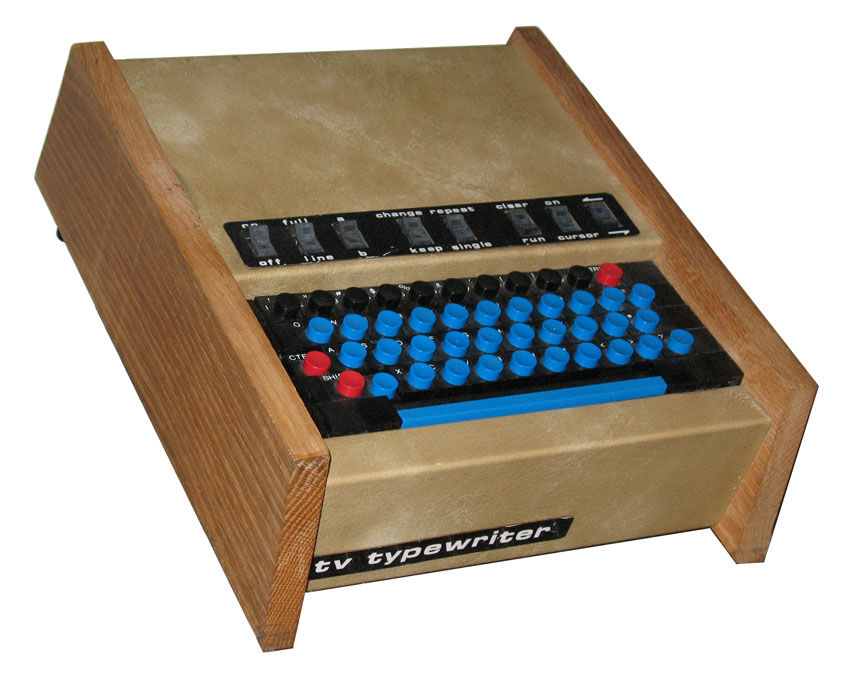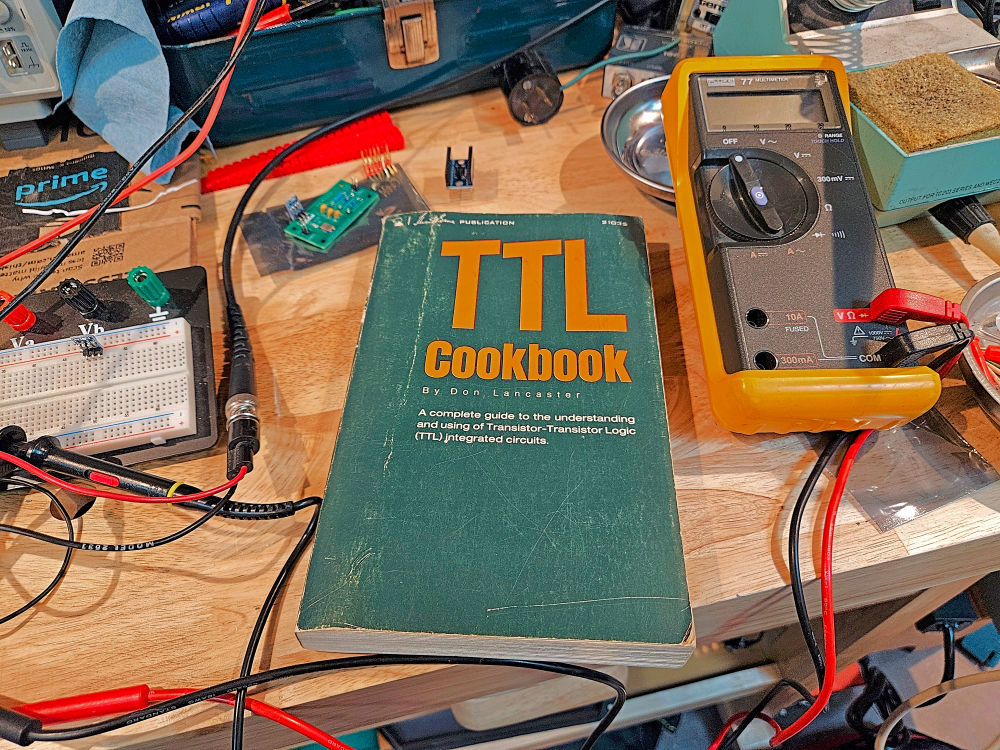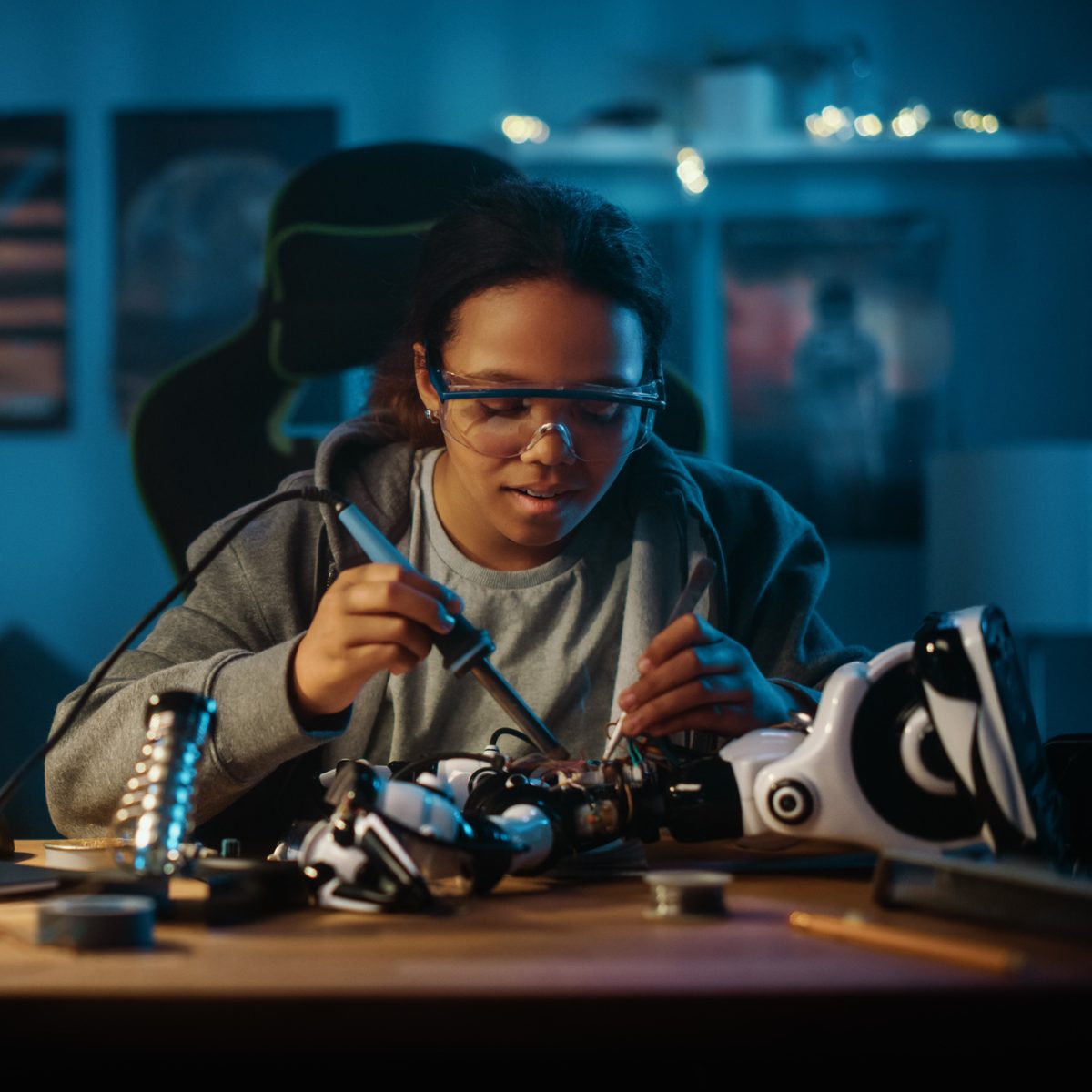The industry lost yet another pioneer last year, and his passing seems to have been largely unheralded. Don Lancaster was a prolific writer whose books and articles going back to the 1960s taught generations of electronics hobbyists and budding engineers how to use analog and digital integrated circuits, how to program early 8-bit microprocessors – particularly the MOS Technology 6502, how to use Adobe’s PosScript page description language as a programming language like a virtuoso, and how to become a technology entrepreneur. Lancaster published more than 1800 technical articles in various magazines and some 35 technical books. He was a rugged individualist who spent most of his life writing articles for popular, newsstand electronics and microcomputer magazines and who published books from his home in Thatcher, Arizona. In addition, he was a serious amateur archaeologist who explored and documented a massive, prehistoric engineering project for water management and irrigation called the bajada “hanging” canal system, which was located in southeastern Arizona’s Safford Basin. Lancaster’s home was in a remote location, located in a small town about midway between Phoenix and Truth or Consequences in New Mexico. His absence from the electronics industry limelight over the last couple of decades and the collapse of print magazine publishing coincident with the rise of the Internet may explain why Lancaster slipped away in 2023 without much fanfare.
Lancaster grew up in Pittsburgh, and he started delving into electronics before he graduated from high school in the 1950s. Like many electronics hobbyists at the time, he started his electronics education by buying electronics magazines such as Radio & Television News and Popular Electronics from the local newsstands. He also became an amateur radio enthusiast and got his ham license before earning his high school diploma. Lancaster earned a BSEE from Lafayette College in 1961 and then started graduate work in electronics at Carnegie Tech (now called Carnegie Mellon University). His first full-time engineering job was at Femco, a small firm that made proprietary carrier-current phone systems for trains, trolleys, mines, and similar communications equipment.
However, Lancaster’s interests were more consumer oriented. At the time, he was most interested in FM radio and light organs. He bought three low-cost SCRs from Texas Instruments, developed a design for a 3-channel color organ, and then sold an article based on the design to Electronics World magazine for $150. The article appeared in the magazine’s April 1963 issue and launched Lancaster’s writing career.
Initially, Lancaster wrote for the newsstand electronics magazines of the day including Electronics World, Popular Electronics, and Radio Electronics. He wrote project articles about electronic circuits that he’d designed and built, including several improved color organ iterations and tutorial articles on some fairly esoteric subjects including archaeomagnetism, paleomagnetism, chirp radar, and thermoluminescence. Lancaster soon learned that he had a knack for explaining complex topics in simple terms and that he could make money by writing.
These adventures occurred during the middle 1960s, during the Vietnam War era. Lancaster decided that the best way to avoid being drafted for the war was to become an aerospace engineer, so he took a job with Goodyear Aerospace (now part of Loral), located outside of Phoenix. Initially, he worked on classified, side-looking, long-range radar projects. At the same time, he continued to write articles for various electronics magazines, and he earned an MSEE degree from Arizona State University (ASU). Lancaster’s MSEE thesis described his development of the first metal detector to be based on integrated circuits. Instead of using analog ICs, which were primitive and pricey at the time, Lancaster went the cheap route by biasing RTL logic gates into their linear region and using them as differential amplifiers. Of course, he wrote up his thesis project for popular consumption, and the resulting article ended up as a cover story in Popular Electronics. While attending ASU, Lancaster started working on a second master’s degree in anthropology, but he never completed the work needed to earn the degree.
Because he was a frequent article contributor to Popular Electronics, Lancaster soon connected with Dan Meyer, another frequent contributor of project articles to the magazine and the founder of Southwest Technical Products (SWTPC). Meyer called Lancaster and offered to sell circuit boards based on his metal detector design. Soon, SWTPC was offering boards and kits based on the metal detector and other Lancaster magazine projects, including a pseudorandom tone generator, several improved color organ designs, multiple generations of digital logic microlabs, audio pitch references, dot and bar generators for color TV troubleshooting, logic demo boards, bounceless pushbuttons, a WWVB receiver, time-of-day clocks based on time transmissions from the National Bureau of Standards, music modules, electronic dice, and a series of digital electronic counters and meters. Lancaster received a royalty fee for each sale, and he estimated that his products represented about a quarter of SWTPC’s sales at one point.
By the early 1970s, Goodyear Aerospace was developing a million-dollar, 12-Mpixel graphics display for use in fighter aircraft. Lancaster decided to build something similar for the hobbyist market: a $99 kit that transformed a black-and-white television into a computer monitor. It could display two pages of 16 lines consisting of upper-case characters and some symbols.
The only semiconductor memories available at the time were shift registers that sold for about five cents per storage bit. Lancaster paired six shift register ICs with a Signetics 2513 upper-case character generator, some additional TTL chips, and an RF modulator to produce what is perhaps his most famous electronics project, the TV Typewriter. The project first appeared in the September 1973 issue of Radio Electronics and became extremely popular. More than 10,000 people ordered plans for the project.

Don Lancaster’s original TV Typewriter project appeared in the September 1973 issue of Radio Electronics. Image credit: Computer History Museum and Michael Holley
He also published articles about improved TV Typewriter models, ranging from the TVT-2 through the TVT 6-5/8. When semiconductor RAM chips became available, Lancaster switched from using shift registers to SRAM chips as the TV Typewriter video frame buffers grew. He then collected and expanded the various project articles into a book titled the TV Typewriter Cookbook, which was the first of Lancaster’s many cookbooks. Byte Shop and Radio Shack both published store-branded versions of this book.
During the 1970s, Lancaster produced several cookbooks including the RTL Cookbook, the TTL Cookbook (which sold an estimated 1.4 million copies), the CMOS Cookbook, and the Active Filter Cookbook. These books made electronic design concepts more accessible to a growing cadre of electronics experimenters and helped to launch many electronic engineering careers. When microprocessors started to appear in the middle 1970s, Lancaster saw another opportunity and jumped on that bandwagon. His microprocessor of choice was the MOS Technology 6502. Among his many microprocessor and microcomputer books, Lancaster published the Machine Language Programming Cookbook Volumes I and II, the Apple Assembly Cookbook, and the AppleWriter Cookbook. (AppleWriter was an early word processor for the Apple ][ microcomputer and it included an embedded formatting/programming language.) When the microcomputer revolution got rolling and Byte Magazine and Kilobaud started publishing, Lancaster was ready to contribute to those publications.

Don Lancaster’s TTL Cookbook, first published in 1974, introduced a generation of electronics hobbyists and engineers to digital circuit design using small-scale logic chips. Image credit: Steve Leibson
By now, Lancaster had become a full-blown entrepreneur, so he left Goodyear Aerospace after eleven years with the company. He first moved first to Parker, Arizona but found it to be too far removed from the electronics community. He then went to Thatcher, where he started teaching students about electronics, microcomputers, and desktop publishing at Eastern Arizona College. Lancaster started writing columns for multiple magazines including Modern Electronics, Radio Electronics, Computer Shopper, Nuts & Volts, and Midnight Engineering. Most of these columns dealt with electronics, microcomputers, and the Adobe PostScript language, but the column appearing in Midnight Engineering, an early entrepreneurial publication published out of Rocky Ford, Colorado, was called the “Blatant Opportunist” and reflected Lancaster’s lifelong fascination with technology’s business side. When the World Wide Web hit, Lancaster fell in step and created his own Web site, called Guru’s Lair, where he collected his articles and sold his books. He also published additional material on a range of topics that interested him and made additional money by selling banner ads and surplus equipment through eBay.
While living in Thatcher, Lancaster rekindled his interest in archaeology by researching a nearby prehistoric irrigation project with Professor Emeritus James A Neely at the University of Texas. There’s a 44-page preprint of an article titled “Bajada ‘Hanging’ Canals of the Safford Basin, Southeastern Arizona: Excellence in Prehistoric Engineering” on the Guru’s Lair Website. Lancaster’s Web site also has PDFs of his articles and books.
Don Lancaster, passed away on June 7, 2023, at the age of 83. He’d lived the past 44 years in Thatcher. Like many electronics pioneers, Lancaster was a force of nature. He seemed to have more energy and drive than ten mere mortals and his collected works left a significant imprint on the history of electronics.






Another well written, very interesting story about an important electronic pioneer. Thank you, Steve.
THANK YOU Steve for covering Lancaster’s passing. That such an important figure died with little notice, when millions of people read his books and built his circuits, has puzzled me since he left us. We are part of that generation of engineers who ‘grew up with Don,’ his Cookbooks always nearby. They were the Gold Standard. RIP Don.
Thanks Steve for this! Don’s TTL cookbook was one of my first electronic books as a kid, and its still at the back of the bookshelf here!
When I designed and built a video terminal in 1974, I added lowercase to a Signetics 2513 7×5 upper-case row-output character generator. The 2513 used row addresses 0 to 7 top to bottom, with row 0 always blank and the 7×5 character in rows 1 through 7. I omitted rows 3 and 6 to produce 5×5 small-capital lowercase characters.
I once called Don on his help line and he picked up the phone. IIRC it was on his WWVB receiver design. We must have talked for over an hour. What a nice guy and it was fun talking about electronics design with him. Sadly there are few people left with his depth of knowledge. He will be missed by me for sure.
Steve thanks for posting this article.
Sam
W3OHM